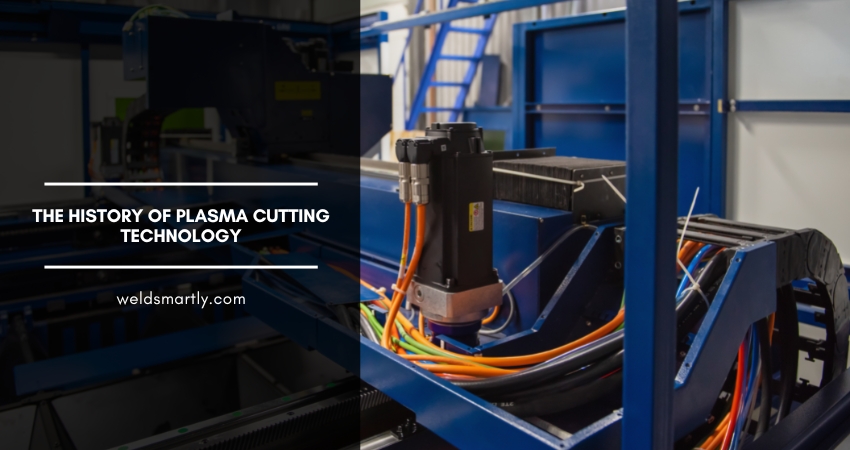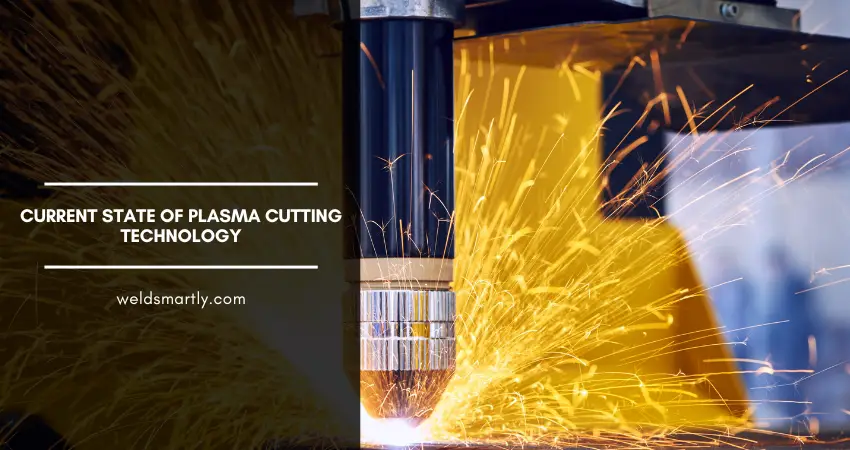Plasma cutting technology is a method of cutting through electrically conductive materials using a high-energy plasma jet. This technology is used in a wide range of industries, such as aerospace, automotive, and manufacturing, for cutting, shaping, and forming metal parts.
The history of plasma cutting technology is an interesting and fascinating subject, as it has come a long way since its early beginnings in the 1930s and 1940s. The purpose of this article is to delve into the history and evolution of plasma cutting technology and to explore how it has developed over time to become the advanced technology that it is today.

Early Developments in Plasma Cutting
Plasma cutting technology was first developed in the 1930s and 1940s. During this time, scientists and engineers were experimenting with high-temperature, high-energy gases and electrical discharges. The first experiments with plasma cutting were done using a gas and an electrical arc, which created a high-energy plasma jet that could be used to cut through metal.
However, the early plasma cutting systems were relatively primitive and had a number of limitations, such as a limited cutting thickness and a lack of precision.
The first commercial plasma cutting systems were introduced in the 1950s. These systems were designed to be more efficient and accurate than the earlier systems, but they still had a number of limitations. One of the main challenges that needed to be overcome was the lack of precision and consistency in the cutting process.
Advancements in Plasma Cutting Technology
In the 1960s and 1970s, advancements in plasma cutting technology began to take place. One of the major advancements was the development of high-frequency plasma cutting. This method used a high-frequency electrical discharge to create a plasma jet that was more stable and consistent than the earlier systems.
Additionally, the use of computer numerical control (CNC) systems became increasingly popular, which allowed for greater precision and automation in the cutting process.
In the 1980s and 1990s, further advancements were made in plasma cutting technology. High-definition plasma cutting was introduced, which allowed for even greater precision and accuracy in the cutting process.
The use of more advanced gases and cutting nozzles also became popular, which helped to improve the quality of the cut and the speed of the cutting process.
Current State of Plasma Cutting Technology

Today, plasma cutting technology is a highly advanced and sophisticated technology. The use of advanced materials and coatings has allowed for even greater precision and accuracy in the cutting process.
Additionally, the use of automation and robotics has increased the speed and efficiency of the cutting process. Plasma cutting technology is now used in a wide range of industries, such as aerospace, automotive, and manufacturing, for cutting, shaping, and forming metal parts.
Future Developments in Plasma Cutting Technology
Looking to the future, there are several potential developments in plasma cutting technology that could further improve the precision, efficiency and capabilities of the technology. One such development is the use of robotics and artificial intelligence (AI) in plasma cutting. This could potentially lead to even greater automation and precision in the cutting process, as well as the ability to cut more complex shapes and designs.
Another potential development is the use of new gases and cutting nozzles. Researchers are currently experimenting with new gases and nozzles that could improve the quality of the cut and increase the cutting speed. For example, the use of inert gases like argon, helium, or a mixture of both with oxygen in the cutting process could improve the quality of the cut, in particular when cutting stainless steel and other highly reflective metals.
3D printing technology is also an area where plasma cutting may be integrated in the future. 3D printing technology is already being used to create prototypes and small-scale production runs of parts, and combining it with plasma cutting could allow for even more complex and detailed parts to be produced quickly and efficiently.
Wrapping Up
The history of plasma cutting technology is an interesting and fascinating subject, as it has come a long way since its early beginnings in the 1930s and 1940s. From the early, relatively primitive systems to the highly advanced and sophisticated technology of today, plasma cutting technology has undergone a significant evolution.
The advancements in precision, efficiency, and automation have made it an essential tool in a wide range of industries, and there is still potential for even more developments and improvements in the future. The potential use of robotics, AI, new gases, nozzles and 3D printing technology, could further improve the capabilities and make plasma cutting technology even more versatile and efficient.

